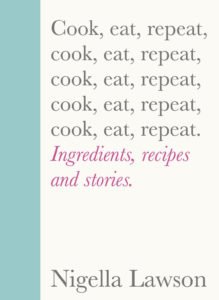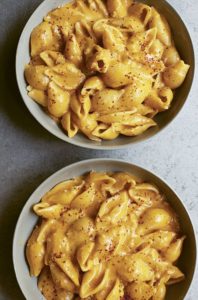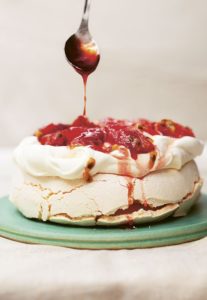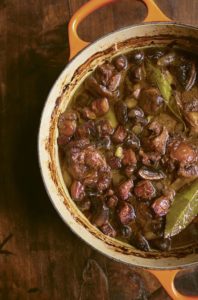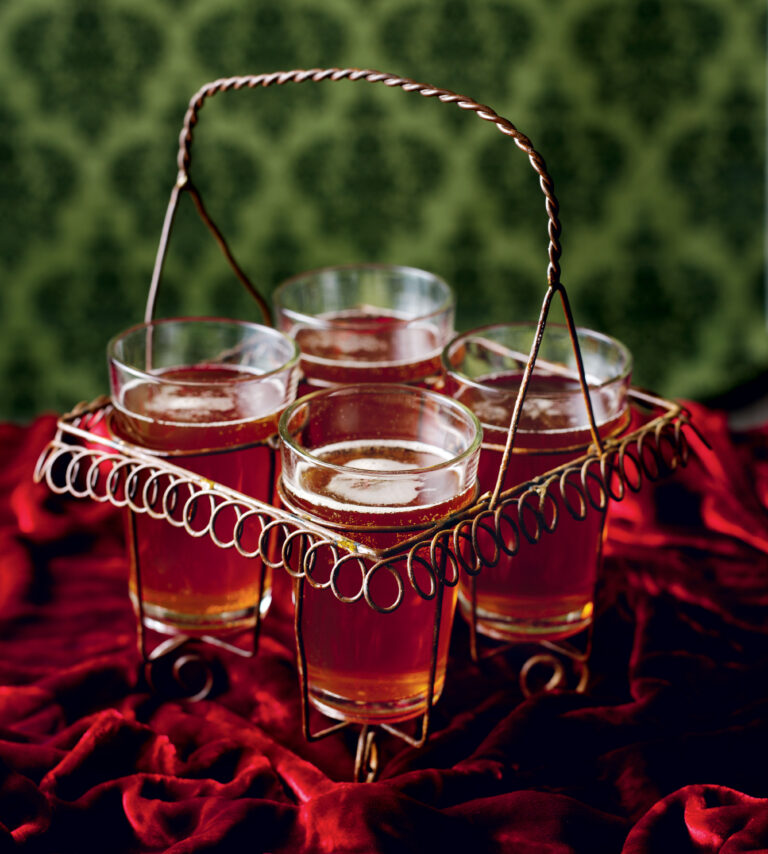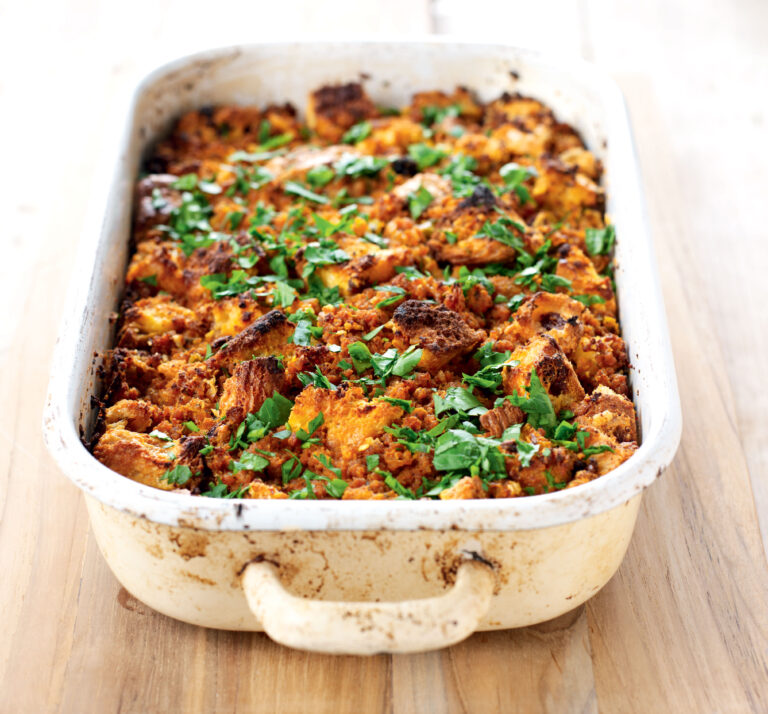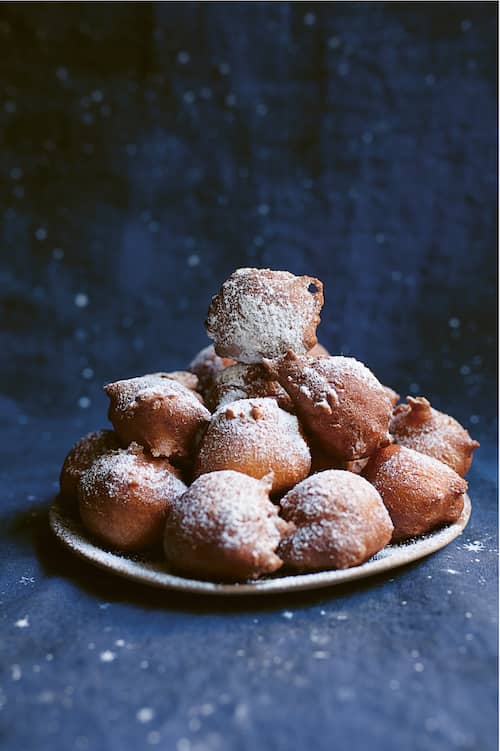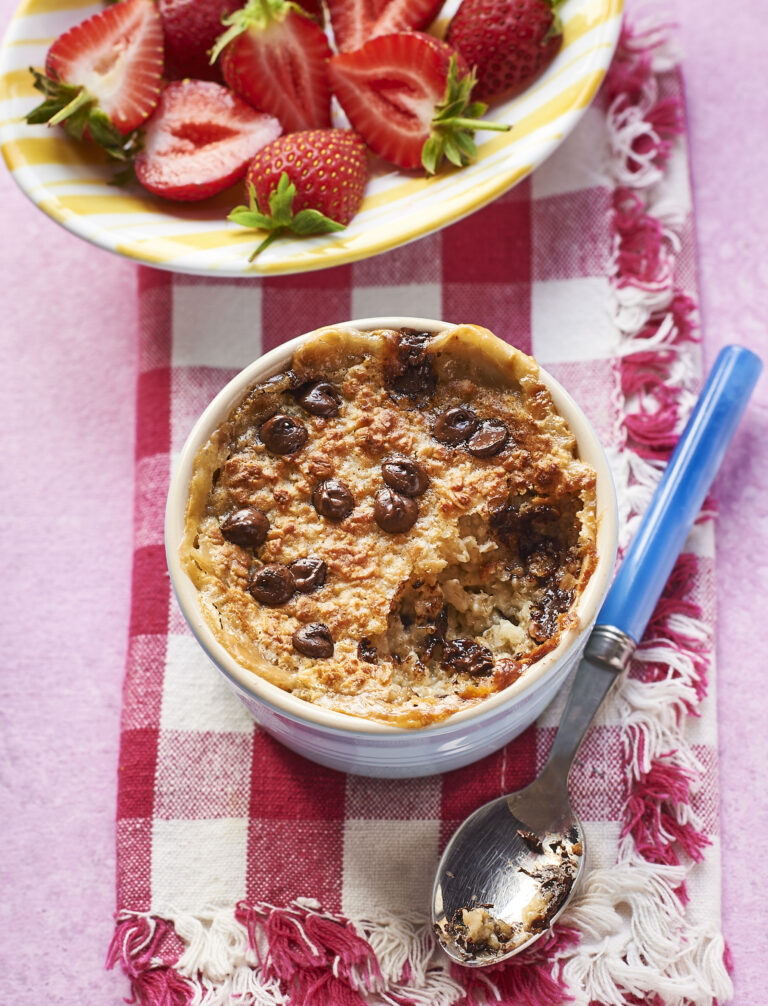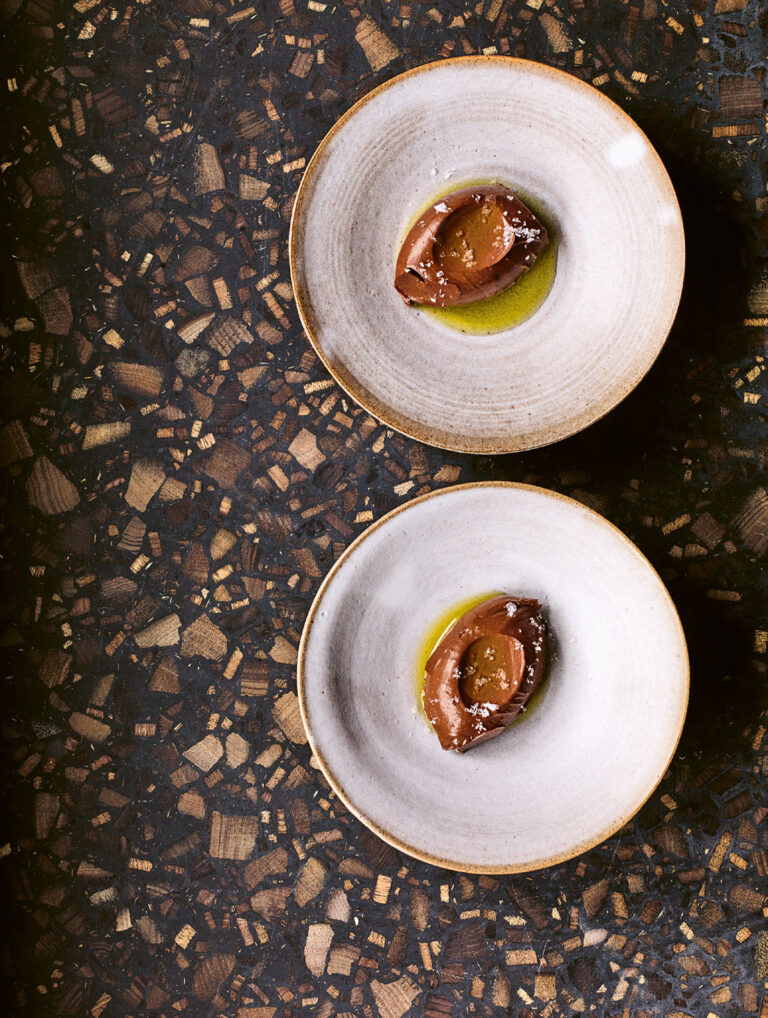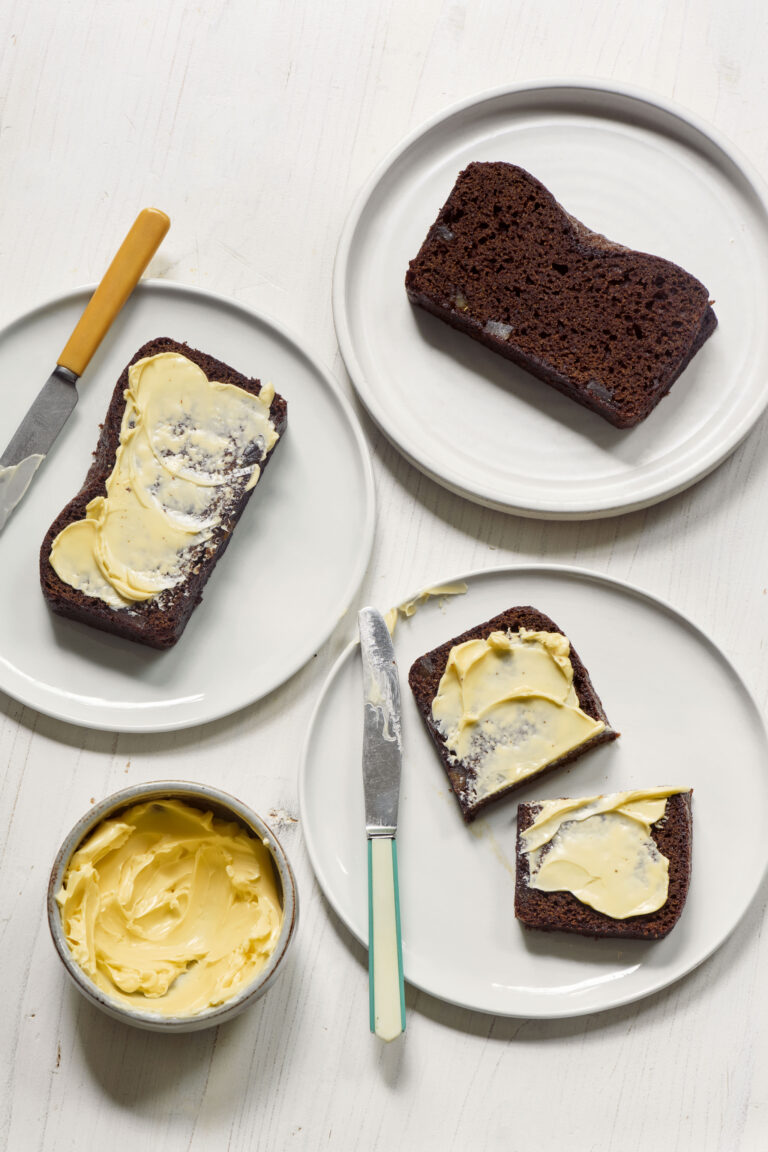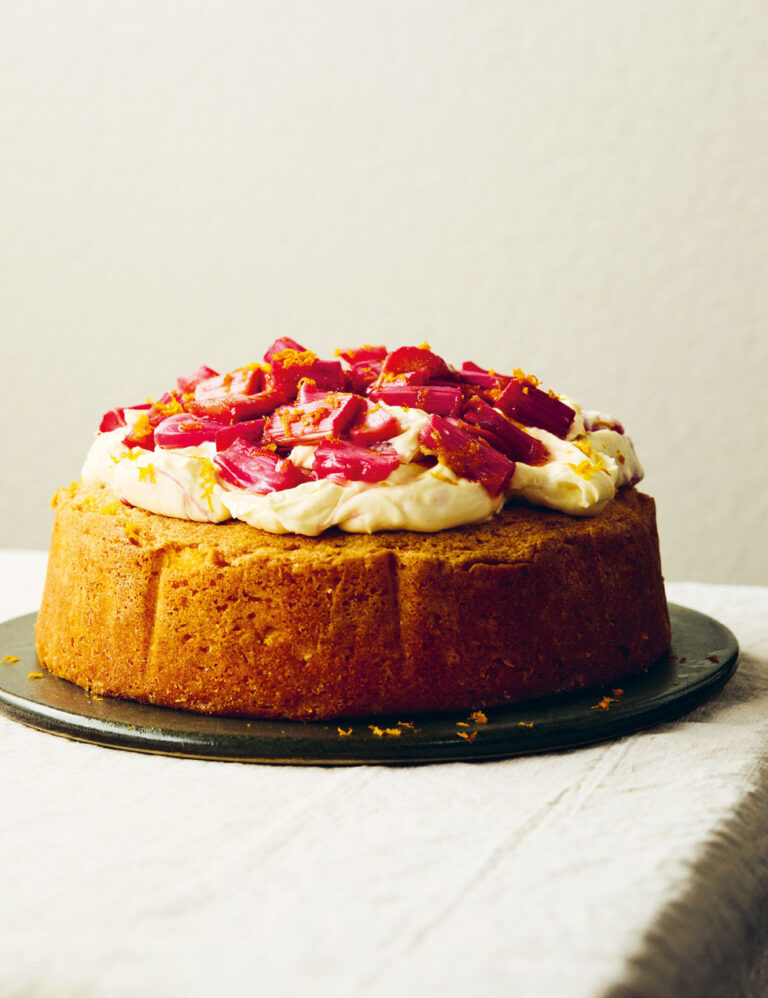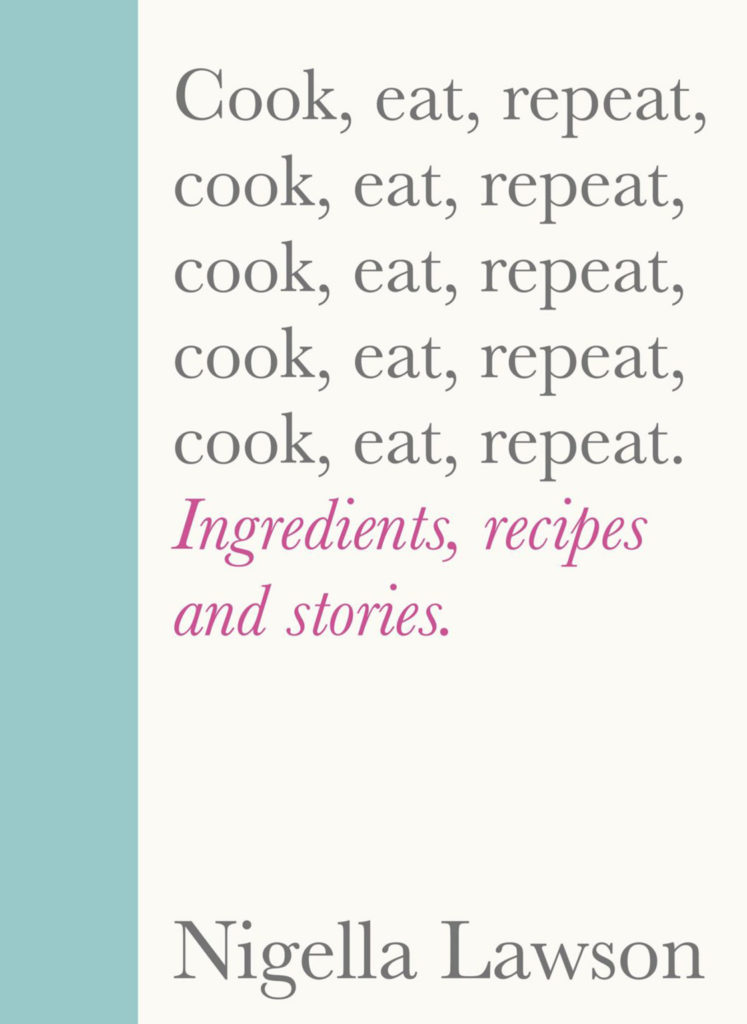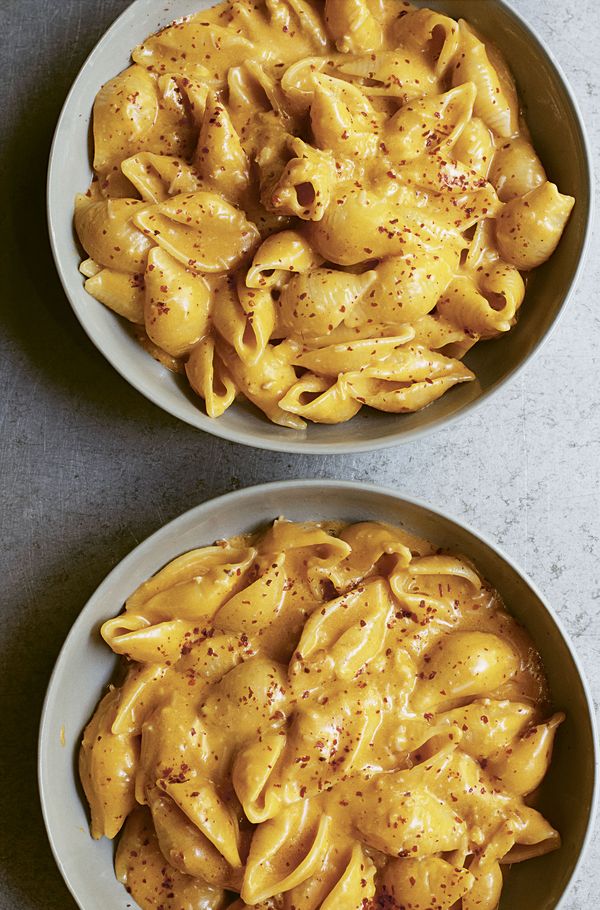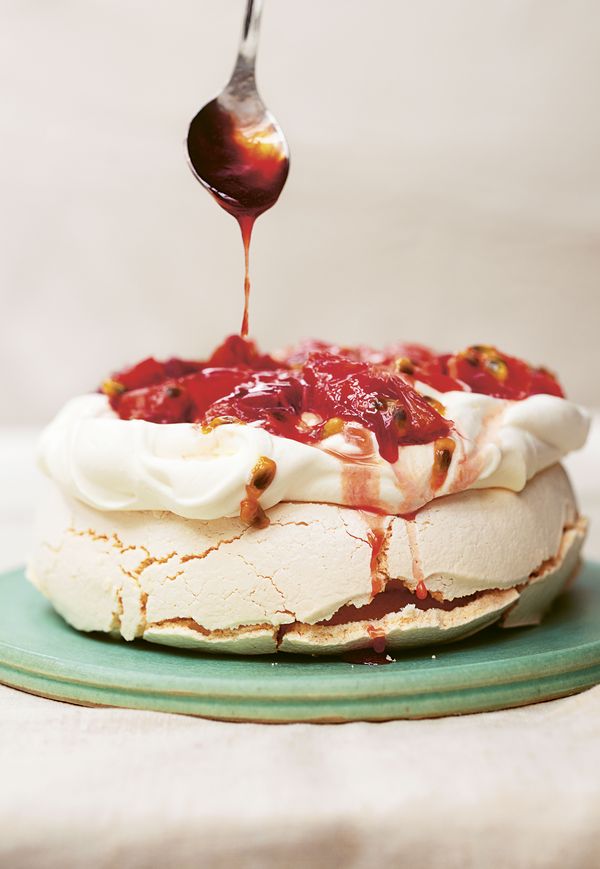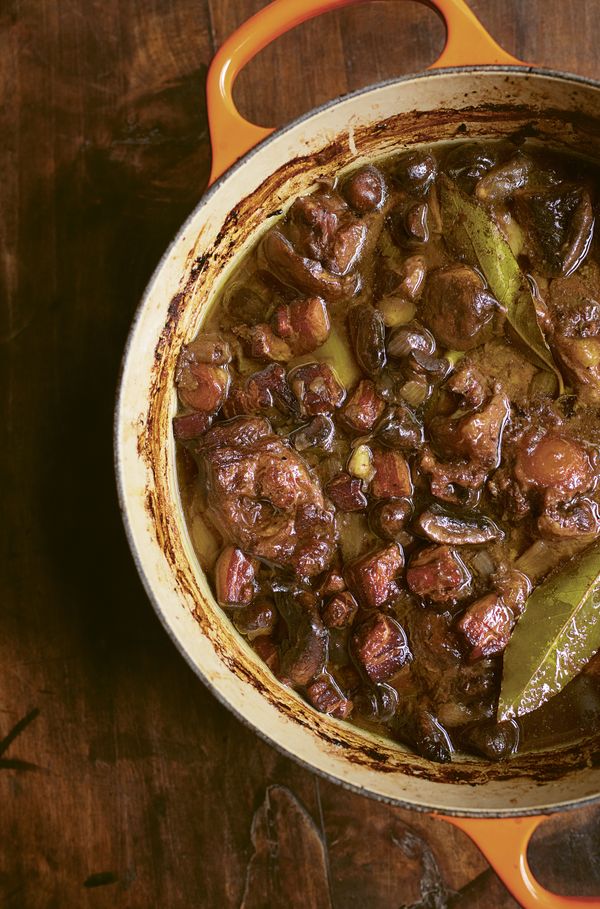Nigella Lawson’s Chocolate Peanut Butter Cake
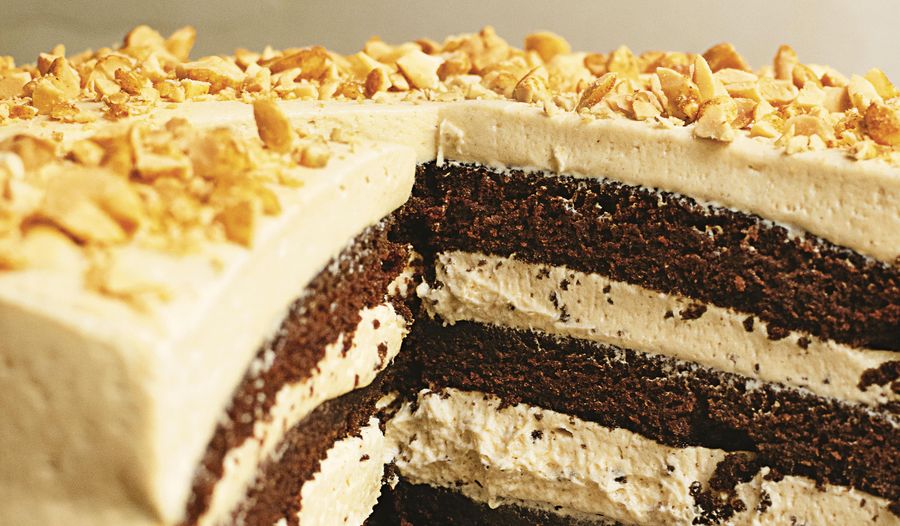
With layers of moist chocolate sponge and fluffy peanut-flavoured buttercream, Nigella Lawson's Chocolate Peanut Butter Cake, as seen on the BBC2 series Cook, Eat, Repeat, is a decadent celebration bake.
From the book
Buy From
Introduction
Much as I love baking, pudding is just not a feature of everyday dinner in my house. I certainly make one if I have people over, but it’s not a habit I’ve ever got into for family supper. Really the only time dinner ends with dessert in my house is on birthdays or other family celebrations. Over the years, I’ve made many different cakes for my children’s birthdays, but for some time now this has been the chosen one, the cake of cakes, elected to grace many special occasions, and with good reason.
The cake itself is dark, damp and divinely chocolatey, but it’s the icing that truly makes it, as my daughter says, ‘the cake of dreams’; even my son, who is not a peanut butter fan, adores it. I’ve yet to find anyone who doesn’t. And those whose issue with peanut butter is its claggy and, as the American writer Nicholson Baker describes it, ‘glotally claustrophic’ consistency, will find this a particular revelation. I don’t, you see, keep it just for family consumption. When something tastes as good as this, it’s only right to share it far and wide.
And what’s more, it’s wonderfully easy to make. The cake is a straight-forward melt-everything-in-a-pan number, and the icing a simple buttercream. What turns the simple into spectacular is the amount of time you spend whipping the icing and the addition of double cream. But it does have to be made with normal commercial, mass-produced peanut butter; the health-store varieties, with their dense heft, will not do here, I’m afraid.
Now I know I have often been somewhat sneery about many-tiered cakes, declaring them better suited for being photographed than sliced, but I recently cracked, and ordered a set of four ultra-shallow tins to aid the baking of those multi-layered cakes I disdain. I pretended (to myself) I was doing it for the children. (And yes, I do still call them children, even though they’re both older than my first book, which was published in 1998.) If you wish to do likewise, you will be able to fill these improbably thin tins with the amount of batter here, though you’ll need to double the buttercream quantities.
This cake has a certain gorgeous elegance with the icing left unadorned, but I love the contrast of a crunchy sprinkling of roughly chopped, dry roasted peanuts.
Ingredients
| For the cake: | |
| 200g | unsalted butter, plus more for greasing |
| 250ml | hot water from a just-boiled kettle |
| 50g | cocoa |
| 100g | soft dark brown sugar |
| 125g | caster sugar |
| 2 tsp | vanilla extract |
| 225g | plain flour |
| 1 tsp | baking powder |
| ½ tsp | bicarbonate soda |
| 2 | large eggs, at room temperature |
| For the icing (double the quantities below if making a four-tier cake): | |
| 300g | icing sugar |
| 150g | soft unsalted butter |
| 200g | smooth peanut butter (see recipe intro) |
| 1 tsp | vanilla extract |
| ¼ tsp | fine sea salt |
| 4 x 15ml tbsp (60ml) | double cream |
| To decorate: | |
| 4 x 15ml tbsp (30g) | chopped dry roasted peanuts |
Essential kit
You will need: two 20cm sandwich tins (or four tier-cake tins) and a stand mixer or an electric whisk.
Method
1. Heat the oven to 180ºC/160ºC Fan. Butter two 20cm sandwich tins (or four tier-cake tins) and line them with baking parchment. Don’t use loose-bottomed tins as this is a runny batter.
2. Cut the butter lengthways into four pieces (just to aid melting) and put into a heavy-based fairly wide saucepan – I use one of 22cm diameter – and set over gentle heat. Add the just-boiled water, and whisk in the cocoa and both brown and white sugars, and keep on low heat, whisking gently, until the butter has melted, and you have a smooth, amalgamated mixture. Remove from the heat, and stir in the vanilla extract. Let stand for 5 minutes.
3. Measure out the flour in a bowl, add the baking powder and bicarb and fork to mix. Whisk the eggs together in a small jug.
4. Pour the eggs gradually into the pan, whisking all the while, until they are completely absorbed.
5. Finally, whisk in the flour slowly and gently until you have a smooth batter, and pour and scrape evenly into your waiting tins.
6. Bake in the oven for 18–20 minutes (or approx. 7 minutes for the ultra-shallow tins), by which time the cakes will be beginning to shrink away at the edges, and a cake tester will come out cleanish; it is a damp cake, though, so it’s fine if a few crumbs cling to the cake tester.
7. Leave the cakes to cool for 10–15 minutes on a rack; they can be turned out once the tins are not so hot that you’d need to use oven gloves. Or you can leave them in their tins until cold. I always do this if making the four-tier variant.
8. To make the buttercream, you must first sift the icing sugar into a bowl. This is one of the few jobs in the kitchen I hate, so I wouldn’t tell you to do it if it weren’t necessary.
9. In another – large – bowl (or the bowl of a freestanding mixer that you’ve fitted with the whisk), beat the butter and peanut butter together very thoroughly; that’s to say, for 3 minutes if you’re using a mixer, or
5 minutes with a handheld electric whisk, by which time you should have a light and fluffy creamy mixture. Beat in the vanilla extract and salt.
10. Still beating, but now at a slightly lower speed, patiently add the sifted icing sugar a spoonful at a time until you’ve used half of it, then beat in the rest in 3 batches. Once it’s all in, turn up the mixer a little and carry on beating for 2 minutes, or for 3 with a handheld electric whisk. Scrape down the sides, to incorporate any icing sugar clinging to the bowl, and beat again for 30 seconds to 1 minute.
11. Still beating, add the cream a tablespoonful at a time and, when it’s all in, carry on beating for 4 minutes (or for 6 minutes with a handheld electric whisk) until you have a soft, aerated and moussily light mixture.
12. Peel away the lining papers from the cakes and place one of the layers, flat-side up, on a cake stand or plate. If this is a 2-layer cake, spread – armed, ideally, with a bendy spatula and a small offset spatula – about a third of the icing evenly onto the waiting cake layer, taking it right out to the very edges of the circle; this will bulge out a bit when you place the other cake on top, which will make it easier for you to ice the sides. And if this is a 4-layer cake, just think in terms of spreading the icing 1cm thick.
13. Top with your second cake, placing it domed-side up, so that the two flat sides are meeting. Then spread another third of the icing over the top. And if making a 4-layer cake, create your tower, spreading 1cm thickness of icing between each layer, and on the top.
14. Use the bendy spatula to get a dollop of buttercream onto the side of the cake, then spread it gently to cover and smooth, ideally with a small offset spatula, and carry on like this, with your two tools, until the cake is covered all the way round. Then run the offset spatula on top and all round the cake again to smooth the buttercream. Leave plain or decorate with the chopped peanuts or as your heart desires.
Make Ahead – Prepare frosting (without cream) up to 1 day ahead. Cover and store in cool place. Whisk frosting briefly then whisk in cream before using.
Store – Store leftovers in airtight container in cool place for up to 5 days.
Freeze – Freeze sponge layers, individually wrapped in double layer of food wrap and layer of foil, for up to 3 months. Unwrap and defrost at room temperature for 2–3 hours.
Reviews
1 Ratings
Have you tried this recipe? Let us know how it went by leaving a comment below.
Thank you for your rating. Our team will get back to any queries as soon as possible.
Please note: Moderation is enabled and may delay your comment being posted. There is no need to resubmit your comment. By posting a comment you are agreeing to the website Terms of Use.

